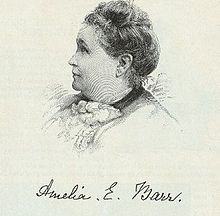Carolyn Wells
211 pages
genre - Mystery
my rating - 3 out of 5 stars
 My ideal book has an even balance of dialogue and description. If the balance HAD to tip one way or the other, I guess I would prefer it to go towards the dialogue side. That is how I would define Raspberry Jam - lots of talking.
My ideal book has an even balance of dialogue and description. If the balance HAD to tip one way or the other, I guess I would prefer it to go towards the dialogue side. That is how I would define Raspberry Jam - lots of talking.List of characters:
Eunice Embury - orphan, raised by her aunt
Abby Ames - Eunice's aunt
Sanford Embury - Eunice's husband
Alvord Hendricks - Eunice's friend and admirer
Mason Elliot - Eunice's friend and admirer
Fleming Stone - a private detective
Terence McGuire, aka Fibsy - Stone's assistant, a boy
Raspberry Jam is a classic mystery story of the 'locked room' style. According to Wikipedia: "The locked room mystery is a sub-genre of detective fiction in which a crime—almost always murder—is committed under apparently impossible circumstances. The crime in question typically involves a crime scene that no intruder could have entered or left, e.g., a locked room."
It was a very quick read. For as short as the book is, I thought that the characters were well defined. I agree with another review that I saw on Amazon: "I was pleasantly surprised to see the main woman in the story wasn't the sweet little damsel who did no wrong. She has a temper and is spoiled. (There were times I got impatient with her.) This adds a great little dimension to the story." by kindlefan May 12. 2013
Wells wrote 61 books with Fleming Stone as the detective called in to solve the mystery. The first in the series is The Clue (1909). Raspberry Jam is the 11th book written. I didn't find out until after I had read the book that Raspberry Jam was part of a series. It certainly didn't feel like I was reading a book from a series.
About the Author -
Carolyn Wells was born on the 18th of June, 1862 in Rahway, New Jersey. She was the daughter of William and Anna Wells. After finishing school she worked as a librarian for the Rahway Library Association.
Wells married Hadwin Houghton, the heir of the Houghton-Mifflin publishing empire.
Carolyn Wells wrote a total of more than 170 books. During the first ten years of her career, she concentrated on poetry, humor, and children's books. According to her autobiography, The Rest of My Life (1937), around 1910 she heard one of Anna Katherine Green's mystery novels being read aloud and was immediately captivated by the unravelling of the puzzle. From that point onward, she devoted herself to the mystery genre.
Wells died in 1942.



.jpg)

